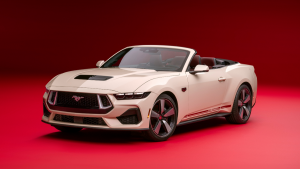New World Order
Team OD
Updated: July 25, 2013, 01:01 PM IST
Weight is a good starting point for any car; in this case it's also because I'm going to end my story on the same note. Weight is as significant an aspect in a car as power, performance or even efficiency but I've never begun a story talking about weight because to date there haven't been too many cars where weight was looked at critically. Supercars of course are all about saving weight, but it's not something you expect in everyday sedans and hatches. If you look closely at our buyers guide you will notice there is a column on kerb weight, look closer and you will notice there aren't any sedans and very few hatches that weigh less than a ton. The Esteem was the first, the Micra and Etios were the most recent. That small group of three is now joined by the Liva which is around 26 kilos lighter than the Etios sedan with which it shares its platform.
Now weight has both advantages and disadvantages; in the case of the Liva the (lack of) weight makes it light on its feet and eases up the operation of everything. The disadvantage however is that it feels similarly light and susceptible in crosswinds, especially in this blustery season. However given more neutral weather the Liva is nicely composed and stable, feeling as composed as the Etios.
The low 920 kilo kerb weight has another advantage to it, its hydraulically assisted rack and pinion steering makes steering the Liva easy and light to drive because there really isn't much weight to haul around. The steering also smoothly adapts to highway cruising speeds so you feel a fair amount of weight creep into your arms giving you even more control and confidence. So while steering feel is adequately balanced, it's also very
precise allowing you to place the car right where you want it to be. Maneuverability in the city or on the highways then is stress free and that's one big plus in the Liva's favour.
But the one component that enjoys the most benefits from the weight savings is the engine. This fairly compact 1197cc engine with 80PS of max power (that's par for the class) has much less weight to haul around than any other car in its segment. Its 87 PS/ton power to weight ratio for a 1.2-litre engine therefore is by far the highest in the segment, the next best is the Swift at 77PS/ton and that's a big difference.
This engine designated 3NR-FE was designed specifically with the Indian market in mind. That means two things: first it had to be under 1.2 litres to avail of excise benefits. Second it had to cater to the typical hatchback buyer who would primarily be seeking refinement and efficiency, not so much performance. Yet at the same time that target consumer Toyota understood was also one well versed with the times, so trying to pass on anything but a contemporary motor would not go down well. So, this all new 1.2-litre petrol, which shares its architecture with the Etios sedan's 1.5-litre unit, kept all 4-cylinders (going against the current trend of lopping off one cylinder to deliver a smaller but less refined 3-cylinder unit) with a 4-valve per cylinder architecture and dual overhead camshafts.
Now with those credentials you'd expect a car with very sharp performance but the Liva does not feel all that quick. That's because this isn't a diesel with massive shove, that engine will only come much later. The torque from the petrol Liva only gets denser once the engine revs get past 2500rpm with a max 104Nm available at 4000rpm. That rating is comfortable for highway cruising where the Etios comfortably touches over a 140kmph and delivers good in-gear flexibility though at the top end you do sense the power tapering off rapidly once the rev needle goes past 5000rpm straining a bit to reach peak revs at 6500rpm. In urban areas the Etios however requires some amount of cajoling to get it moving, at the bottom end torque build up is slow and you have to slip into low gears to inspire the Liva with a strong cane to build momentum. That affects drivability because you will constantly find yourself downshifting, which is also a slightly tiresome exercise. Clutch pedal feel though is impressive and reduces some of the effort.
Anyways the reason for the slight initial sluggishness is the transmission, the ratios are primed for efficiency not performance. This is the same gearbox as the Etios but the ratios have changed especially top gear. So while I do suspect the performance will fall short of what the Swift or the i20 are capable of, the efficiency will be astounding. In fact according to the claimed ARAI-tested fuel efficiency the Liva returns a very respectable 18kmpl. That means the city figures should be upward of 15kmpl with highway efficiency above 20kmpl, those however will be verified by us during the course of our road test next month. Overall though the Liva does not have the urgency of the Swift but it's certainly a lot nicer than the Polo and the rest of the 1.2-litre pack.
On the NVH front the Etios feels a bit buzzy at lower revs and this is only because the engine is working hard to get into the powerband. But get there and it's as quiet as a large executive saloon with double glazed windows and that's the benefit of having four cylinders instead of only three. There are barely any sounds from any other quarter and given Toyota's legendary build quality and reliability I don't expect there to be any for a long time to come.
The drivetrain is slotted into a monocoque that's similar to the Etios except that the wheelbase is shorter so that the entire car can fit within the 4-metre excise regulation defined 'small car'. That shortening is a benefit though, because it allows the Liva much better dynamics than the Etois. The more compact wheelbase to track ratio gives it more confidence than the Etios when charging around corners. The suspension is also similar to the Etios with fine tuning to account for the lesser weight and also the lack of a boot hanging out at the back. The VX variant I drove had 15-inch wheels and tyres while lower variants will have 14-inchers. However those 15-inch wheels with 185/60 section rubber offer better grip and braking without compromising fuel efficiency.
Yet I wouldn't categorise the Liva as a sporty hatchback, the MacPherson suspension at the front with the torsion beam at the rear are tuned for comfort rather than outright handling. On the comfort aspect the ride is plush and soft though the dampers are ideally matched to the variety of Indian road surface conditions. A first drive in Japan didn't offer us the right conditions to assess this aspect the track was too even and too smooth but finally after driving it in India I can assure you that the sense of plushness and luxury is right up there with the best.
In respect to handling both the Swift and the Polo are more accomplished though I wouldn't bet on the Liva not keeping pace with either until a more thorough comparison. If anything the Liva may be more flickable and lively though body roll is quite pronounced and there is some front end dive under hard braking. In contrast the Swift and Polo feel more grounded and rock solid.
So mechanically the Liva appears to be a highly competent car but on the basis of our experience with the Etios that runs on the same platform there was never a doubt. If there were any doubts at all they were with the styling, and I'm happy to report the Liva is a far cry better than the Etios on this front.

The Liva's biggest strength is that while it does carry on the Etios brand signature it's far more striking than the sedan with a very unique character. Of the four trim variants that are going to be available the VX, which is the top of the line, is the only one to sport a body kit as standard. This will include bumper skirting at both ends, fog lamps, side skirts and a rear spoiler. It also gets larger wheels and tyres which makes the car appear more substantial and muscular. While the nose remains the same as the sedan the rear end is a complete departure and the panels aft of the B-pillar are all new. The Liva will also sport one additional colour which is the electric blue you see in these images and in our opinion Toyota should have optioned more of these bright and vibrant shades since they suit the car so well.
Inside the Liva is the same as the Etios so don't expect passengers to go wow at the style but what there is is tons of practicality and sensible design elements. Except for the redline markings on the tachometer there is no other difference to the sedan's interiors with the top of the line variant getting the flat bottomed steering with audio controls, an integrated MP3 player with aux and USB connectors, twin front airbags, ABS and the (massive) cooled glovebox.
Space inside is not as vast as the Etios due to the shorter wheelbase. The rear bench has moved closer to the front seats, an inherent trade-off of a hatchback design to ensure boot space does not get too scrunched. This means lesser knee room for passengers in the rear of that cabin. Yet the cabin is wide enough to seat three adults at the rear since the width hasn't changed from the sedan and there's more headroom since the roof no longer slopes down. Add to it the nearly flat floor with the very low transmission tunnel allowing the passenger in the middle adequate comfort.
Now when the Liva is introduced in the market in the next few weeks we expect it to be priced between 4.0lakhs to 5.5lakhs ex-showroom, slotted in between the Swift and Figo and tasked with stealing sales from both. The Etios has already demonstrated that Toyota have got the packaging, powertrain and dynamics right on the money; with the Liva the only fly in the ointment the styling has also been addressed. And that, along with the tremendous goodwill the Toyota brand enjoys in India, should make the Liva a highly prized purchase.
There is however one issue that Toyota needs to address to ensure the Liva is just as successful as any of their other models and that is timely deliveries. In the last couple of months all Japanese manufacturers have had to shore up the brunt of the disasters back home that crippled supply for a short while. In Toyota's case that only increased the already rather long waiting list for the Etios and now with capacity shared between both the sedan and hatchback this will only increase the waiting period for both. Nonetheless for a car that could spell a new world order in the hatchback segment it is well worth the wait!

Price (Ex-Delhi)
-NA-
-NA-
Displacement
1197cc
1197cc
Transmission
Manual
Manual
Max Power(ps)
-NA-
-NA-
Max Torque(Nm)
104
104
Mileage
17.71 Kmpl
17.71 Kmpl
Related Stories
Advertisement
Advertisement
Top Stories
Advertisement
Latest Videos
Most Popular
Advertisement
1
2
1
2
Network18 Updates
Compare














